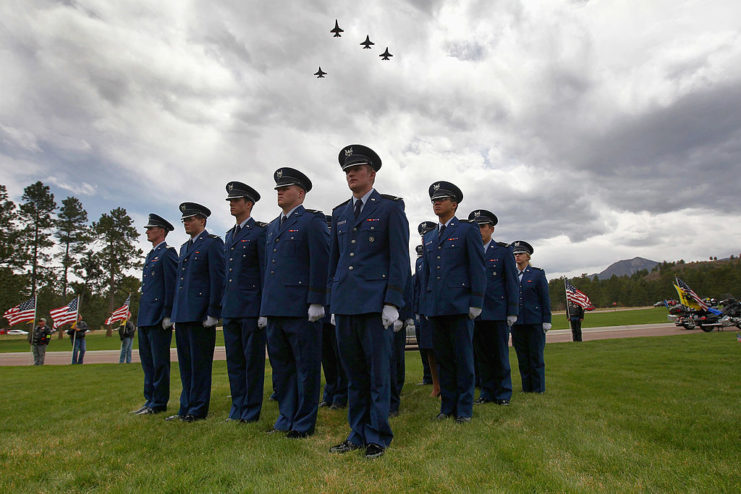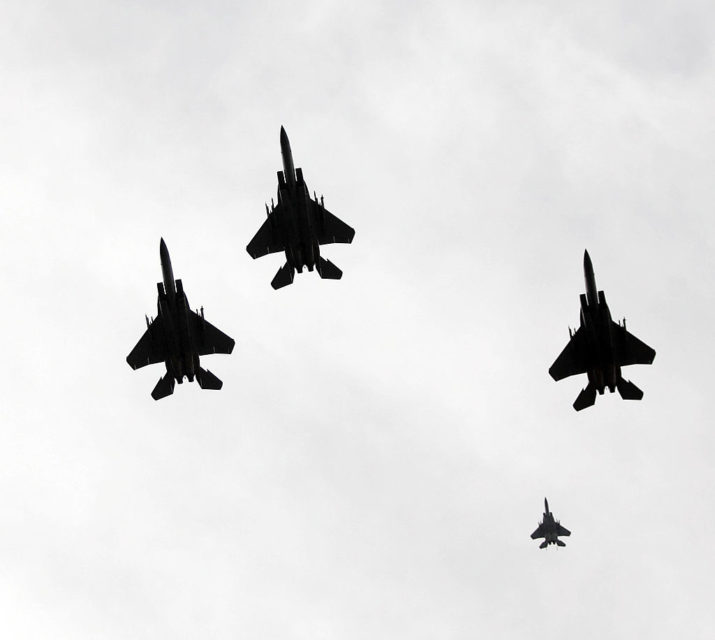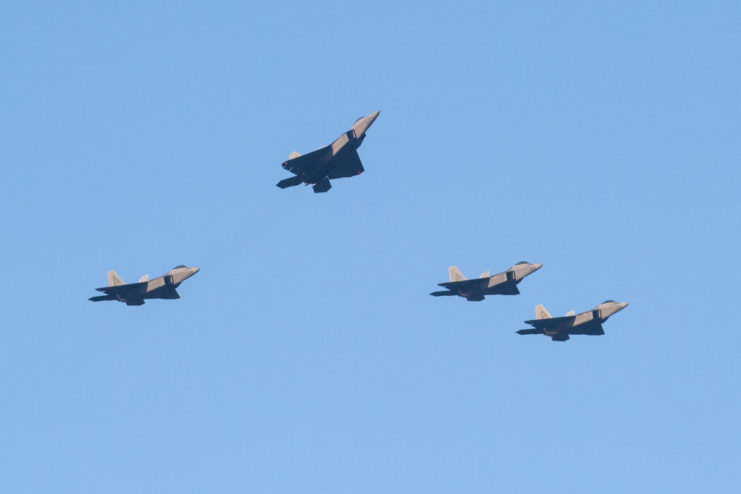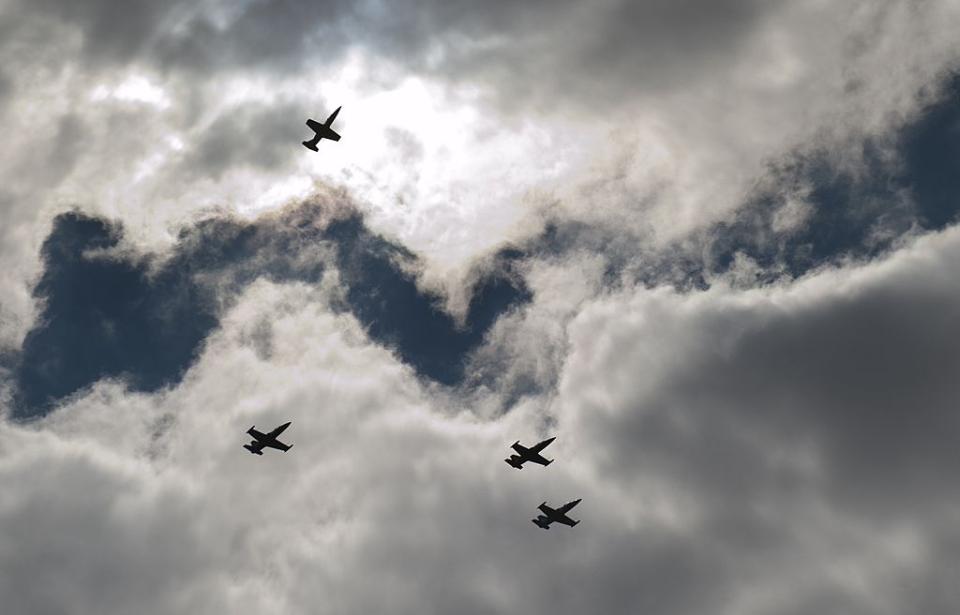Have you ever looked up at the sky and saw a squadron flying overhead perfectly in position, only for one to suddenly pull away, leaving an empty spot in the pattern? If so, you’ve witnessed the “missing man formation,” a form of salute to a fallen pilot that originated roughly 100 years ago. It’s a common occurrence at military funerals and memorial sites, and holds a special place in the hearts of airmen across the world.
Origin of the missing man formation

The exact origin of the missing man formation isn’t known, although it’s generally said to have begun during the First World War. One account claims the first maneuver occurred at the Commonwealth funeral for Manfred von Richthofen – better known as the Red Baron – after the German flying ace was shot down. Allegedly, British fighter pilots performed this new form of flypast as a sign of respect for the fallen airman.
Whether this was truly the first instance of the missing man formation is up for debate. However, it’s clear the practice originated among the Royal Air Force (RAF) during the war. When pilots returned to base, they flew over in formation, so their ground crew knew they were planning to land. This also allowed those on the ground to easily see if there were any aircraft missing.
Eventually, this evolved into a formal event performed for fallen airmen.
Increased popularity

Although the practice was in place for years prior, the first time the missing man formation was performed for a non-RAF funeral was at that of King George V in 1936. Not long after, the maneuver was adopted by the Americans, who began performing it as a way to honor fallen airmen and other important military figures. The first instance of this was at the memorial service for Maj. Gen. Oscar M. Westover, where 50 aircraft flew overhead with one position left empty.
Initially, the maneuver was performed with an aircraft missing from the formation. By the time the Second World War came to an end, it had changed to a full formation in-flight, with the aircraft representing the “missing man” pulling up to fly away from the rest of the group, leaving an empty spot.
While the formation is now a common occurrence, it wasn’t until the war in Vietnam that the American public began to regularly witness it. In particular, the US Air Force Thunderbirds performed it in honor of those kept as prisoners of war (POWs). Since then, the meaning behind the missing man formation has been largely unchanged, and it’s used to honor those pilots who’ve lost their lives, as well as other major figures.
Different versions of the missing man formation

The most common version of the missing man formation is what the maneuver evolved into after the Second World War. It’s called the “fingertip strong right” formation and features the aircraft flying in a V-shape, with two making up the right arm and a single jet positioned on the left, all behind the lead pilot. While flying overhead, the aircraft between the leader and the end of the right arm peels away.
The more traditional formation from World War I is also relatively common.
More from us: The Douglas SBD Dauntless Changed the Course of the Second World War In a Single Day
Other versions of the missing man formation also exist, including those that use any number of aircraft during the flypast. In one instance, the US Air Force flew a dual missing man formation for brothers Maj. Gen. Cuthbert “Bill” and Lt. Gen. Charles “Buck” Pattillo, who’d helped establish the Thunderbirds. In this case, they flew in a formation of six, with the right- and left-wing pilots pulling away, calling it the “Pattillo Pull.”
Whatever the layout or number of aircraft, the missing man formation is considered a great honor, and is an important part of remembering the dead, with pilots weathering the worst conditions to ensure the maneuver occurs.
